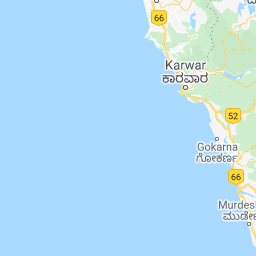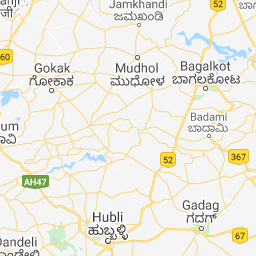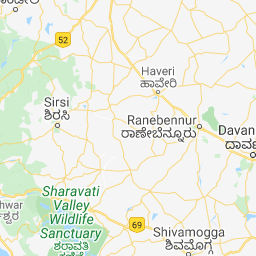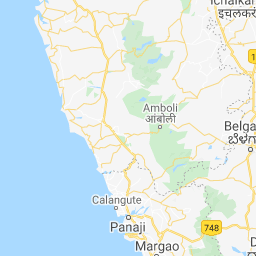Goa Tourism & Travel - Know Before you Go!
- 14 Goa Packages
- Starting Rs 9,400 only
Good ol' Goa (Value for Money)
3 Nights Goa
Starts Rs. 12,225- Daily Breakfast
- Accommodation for 3 nights at Goa
- Goa Sightseeing
- ...more
- See Details
Oooh Goa! (Value for Money)
2 Nights Goa
Starts Rs. 10,650- Daily Breakfast
- Accommodation for 2 nights at Goa
- ...more
- See Details
Goa Leela Weekend
2 Nights Goa
Starts Rs. 15,697- Daily Breakfast
- Accommodation for 2 nights at Goa
- ...more
- See Details
Oooh Goa! (Premium)
2 Nights Goa
Starts Rs. 11,870- Daily Breakfast
- Accommodation for 2 nights at Goa
- ...more
- See Details
Goa Leela
3 Nights Goa
Starts Rs. 19,795- Daily Breakfast
- Accommodation for 3 nights at Goa
- Goa Sightseeing
- ...more
- See Details
Good ol' Goa (Premium)
3 Nights Goa
Starts Rs. 16,125- Daily Breakfast
- Accommodation for 3 nights at Goa
- Goa Sightseeing
- ...more
- See Details
-
Goa Tour & Travel Guide at WeAreHolidays
Of all the colonists India has had, Goa was the sole territory of the Portuguese, whose cultural influences have trickled down and embedded themselves in the roots of the region, and can be seen even today in Goa and amongst Goans world over. It’s not just the sun, sand and serenity, Goa is bright and colourful to look at, but it’s on closer observation that the fine detailing and intricate layers of the place come to the forefront. Known for its beaches, party scene, hippie hang-out and a shift of lanes from the fast track to ambling along with afternoon naps, Goa is on almost everyone’s to-visit destination list. Come to Goa for its beaches, the delicious food, letting your hair down, to rest, and most of all to understand how living is so much better than just being alive. But that’s not all. The culture of Portugal is not just prevalent in the lifestyle, food and arts, but also the architecture. The old city has pretty pearls that masquerade as buildings, houses and churches that draw attention to the history that is embedded within its walls. Goa is India’s smallest state by area, and fourth smallest by population. On the Konkan Coast, it lies south of Maharashtra and west and north of Karnataka, with the Arabian Sea lapping to its east. Panaji, Vasco Da Gama and Margao are three of the main cities in this State. The first is the capital, the second is the largest city and the third is a historical hub. The beaches are largely divided into North and South with the busier ones being in the North where the party scene is, and the quieter, clearer, less populous ones to the South. Goa also has two main seasons: winter and summer. In the former, there is a greater European influx, while the summers see more Indians, from all over the country.
-
Local Language
Almost everyone in Goa speaks English. Konkani is the mother tongue for most people, and Marathi and Hindi are also widely spoken.
-
Goa is known for the atmosphere it provides to rest, rejuvenate as well as live it up. However, there are still a good many things to do besides dancing the night away or soaking the sun by the beach. Calangute and Baga are best known for the buzzing activity-laden beaches as well as host of eateries and clubs. Baga can be considered the hub of the party scene with old-time clubs such as Mambo's and Tito's. Anjuna's Wednesday flea market has to be a dot on the calendar for the experience, ambience and foray into ""hippy-land"". The trinkets available tend to be very pretty though commercialization has caused them to cost a fine penny as well. At the fag end of the day, as the market is also rounding up, walking onto Anjuna Beach will find you in the midst of scattered groups of people sitting and strumming guitar or just staring off into the distant sea. Go for a romantic sunset walk on the Palolem Beach that has a small but beautiful bay and also a cluster of rocky islands off its shore. For hours of solitude however, park yourself at Cola Beach and peace will be found.
-
Cotigao Wildlife Sanctuary
If you feel like looking at a wildlife sanctuary, stop by the Cotigao Wildlife Sanctuary which is Goa's second largest and makes for a lovely trek.
-
Cabo da Rama Fort
The Cabo da Rama Fort is another worth-a-visit fort. Located at the mouth of the Sal River, it was used as a prison till about 50 years ago.
-
South Goa
South Goa encompasses Margo or Madgaon all the way to the border of Karnataka, spanning across Colva, Benaulim and Palolem. This area was known for its pristine, virgin beaches, and isolated quietude. With the increase in tourism South Goa has become a lot more populated and commercial than it used to be, though still a lot less than North Goa. If its peace and tranquility you seek, South Goa is the place to be in.
-
Old Goa
For a better look at history and wondrous architecture, Old Goa serves up a handful of churches, buildings and cathedrals, some of which are the largest in Asia. If you are in Goa at the same time as the Feast of St. Francis Xavier on 3rd December, there's nothing like the festivities that abound in Old Goa. The first stop would be the Basilica of Bom Jesus, which is famous throughout the Roman Catholic world for containing the remains of St. Francis Xavier. Simple in construction apart from the richly gilded altars, this cathedral cannot be missed. A handful of museums such as the Archeological Museum, and the Museum of Christian Artalso dot the vicinity. Goa's largest church is the Se de Santa Catarina, constructed in a Portuguese-Gothic style with a Tuscan exterior and Corinthian interior. The blending makes it a beauty to behold.
-
Colva and Benaulim
Colva and Benaulim are two villages that are popular with families and middle-aged Europeans and haven' become too commercialization yet. A quieter, hippy dominated area in Goa is Arambol, with a host of yummy eateries and funky trinket shops.
-
Panaji
Most visitors tend to look at Panaji as second fiddle to the country's beaches a grave mistake! Panaji lies on the bank of the Mandovi estuary and is a quaint, laidback city to saunter in, mixing flavours of the Konkan with reminisces of the Portuguese plus a host of cultures brought in by foreigners. The architecture of the area reflects it, as its cobbled streets, pretty villas and interesting buildings with balconies and red tiled roofs share space with bleached churches and Latin style red roofed houses by the riverside.To add to the mood is a Baroque church in the middle of it all, on the main square. The Church, Our Lady Of Immaculate Conception, was built in 1541 and heightens the charm of the city. Amongst other churches is the Chapel of St. Sebastian, in the Fontainhas area, a testament to the Goan Inquisition that makes for a dip into history.
-
Fort Aguada
Fort Aguada is a very well preserved seventeenth century Portuguese fort and lighthouse on Sinquerim Beach, at the mouth of the river Mandovi. One of the most prized as well as most crucial forts for the Portuguese, Fort Aguada occupies the entire peninsula at the south western tip of Bardez.
-
Vagator and Chapora
Off the beat beaches include Vagator and Chapora in North Goa, with their rocky terrain and penchant for all-night parties and raves. Some of the other nearby beaches are Candolim and Sinquerim below Fort Aguada.
-
Goa is an Epicure’s delight and a Hedonist’s paradise. With a variety of scrumptious food, cheap alcohol, and plenty of places to either party or be entertained, or both together, the sands of Goa promise to tantalize one and all alike. Starting with some old favourites, Britto’s and Souza Lobo’s are on the tip of anyone’s tongue. Britto’s is on Baga Beach and serves the most delicious continental fare with heart wrenching desserts, right on the beach itself. Finding a table is tough, and letting go of one, even tougher. The additional plus is most clubbing spots are almost a walk away. Souza Lobo’s has been dishing some of the finest seafood for years. On Calangute, Lobo’s is ideal for both a lazy afternoon meal and a nice dinner, to be polished off with some amazing hot fudge sundae. Fellini in Arambol serves fine wood-fired pizza and delicious pasta while Shimon, in the same part of town offers some exquisite Israeli far. Double Dutch is famous for its selection of steaks, pies and cookies. If you go to Vagator, stop by the fancy French place Le Bluebird and order yourself some bouillabaisse and black coffee or choose from their selection of imported wines. If that’s not your style, Marrakesh boasts of authentic Moroccan cuisine and swears by its couscous, while Robert’s Place has a little bit for everyone at the oddest of hours. In Panaji, Viva Panaji serves typically Goan food at tables almost by the street itself, or go over to the Hospedaria Venite for a relaxing lunch at their balcony tables and chew on their vindaloo as you sip your cold beer. If it’s something fancy you’ e after, the Cidade de Goa is a Portuguese themed restaurant that sets the mood for a cozy dinner. The German Bakeries around Goa are the best to start the day (at whatever hour) with mouth-watering pancakes, crepes, waffles and delicacies made with egg. In the same genre, is Martha’s Breakfast Place at Anjuna, which will probably just send you straight off for a siesta. Apart from these, most beach shacks serve lovely food and just-caught and cooked seafood. Stop by and have a peek inside, you’ll most likely than nought be met by a friendly member of the family that owns the place call you in for some food and beer, or better yet, the famed Goan Feni. Food, fun, and a sunny afternoon siesta are part of the Goan way of life. Truly, all holidays should be made of nothing more and nothing less.
-
Goa has a tropical monsoon climate, that’s hot and humid, usually in a good way and extremely conducive to the laid back life it breeds. The temperature is largely the same throughout the year,between 18 to 28 degrees. May is the hottest month with temperatures going up to 36 degrees. June to September is when most of the rains come in and the sea is rougher than usual. The best time to visit Goa is from October to February, when it’s pleasant, the skies are clear, the temperature is stable, the air is cool and the sea is at its best behaviour. Temperatures can come down to 12 degrees during this time. Summer starts peaking from March and shines in all its glory in May, with the time in between seeing a steady increase in heat and humidity. In this sultry weather, there is nothing better than lying like a beached whale under a tree, preferably on a hammock, with a book to read, and something ice cold to continually sip on.
-
Being a prime time tourist hub, Goa is connected to the rest of India in a variety of ways.
-
Rail
The Konkan Rail is the main line running through Goa, with Madgaon as the main station. However, the closest station to Mapusa, Calangute and the surrounding areas in the North is Thivim. Pernem for Arambol, Karmali for Panaji and Canacona for Palolem, although not too many trains stop at these smaller stations.
-
Air
Goa's Dabolim Airport has both domestic and international flights (mostly from UK, Germany and Russia) plying to and from it. It is very well connected to all major cities in India including Mumbai, Delhi, Calcutta, Bangalore, Chennai, Mangalore, etc.
-
Road
Exceptionally well connected by road, there are daily buses that ply between Goa and Mumbai, Pune, Bangalore, Mangalore, that pass through several places on the way. Most bus journeys are overnight ones. There are a variety of buses to choose from, though the Volvo is most recommended. Driving down/up to Goa can be a marvellous experience, especially if undertaken during the monsoons. While extreme caution must be exercised due to the slippery roads and statistical increase in accidents, the view and act of driving through the Ghats, all the way down to the sea is in itself a prelude to the promise of Goa.
-
Goa is known for its baubles, trinkets and kitschy prizes that can be picked off a flea market table or a cubicle-shop on a street or by-lane. Anjuna’s Wednesday Flea Market has already been mentioned prior to this as an experience that goes much beyond shopping. For the slightly more hard-core however, are a handful of other options. Artjuna, also in the Anjuna area, is a cafe cum boutique where you can sip some and shop some. It offers a range of artefacts and some delicate jewellery. Another vintage and fashionably eclectic accessories store is Bebel in Calangute. With brooches, Italian umbrellas, beautiful glass necklaces, bags and other high-end European knick-knacks worth the pretty penny it'll cost you. A quaint 'store' that's a must visit would be Cheshire Cat'in Assagao near Anjuna. Housed in an old Portuguese mansion, not only does the store sell some trendy jewellery, but it also hosts workshops on working with old, silver and semi-precious stones. For the more bazaar feel, keep your Saturday nights free for a trip to Ingo's Saturday Night Bazaar in Arambol where the wackiest of objects can be found, from fire twirling gear and Dali t-shirts to Monet prints. But Goa isn’ all about flea markets and fragile trinkets. There are also a handful of designer stores that create some mind boggling stuff. Martino Caramia or Tino on Little Vagator Beach is an Italian designer who has mixed cultures seamlessly, under his label Flame. Stylish Italian jackets and trenches cut from Indian fabrics like khadi and linen, as well as pants and corsets stitched from saris are his usual fare. On the other hand, Miriam Strehlau on Anjuna is a German designer whose 'works' include jackets, dresses, bags and home products fused together by various styles that can bets be described as funky and new age. Spanish designer Susana Gago' sboho chic store Miss Monkey in Canacona, South Goa has wild, limited edition garments that can be taken out of Goa but will never really let go of the feel of Goa. Outside of clothes, Paperworks in Panjim has a stash of stationery, as its name suggests, where everything is made from handmade, locally produced paper. Sangolda is a lifestyle store where the most eclectic home décor can be found, with many many brownie points for the antique variety. Saudades in the same area, focuses solely on antique furniture and is located in an Indo-Portuguese manor that’s converted into a store. Still not done with the Portuguese high? Pick up some snazzy hand-painted tiles from Velha in the Fontainhas area of Panjim and take them home, to add that touch of laid-back, lovely Goa to your lovely home.
 As you can see, we’re working to hard to bring this feature to you. Meanwhile, please bear with us!
As you can see, we’re working to hard to bring this feature to you. Meanwhile, please bear with us!















































